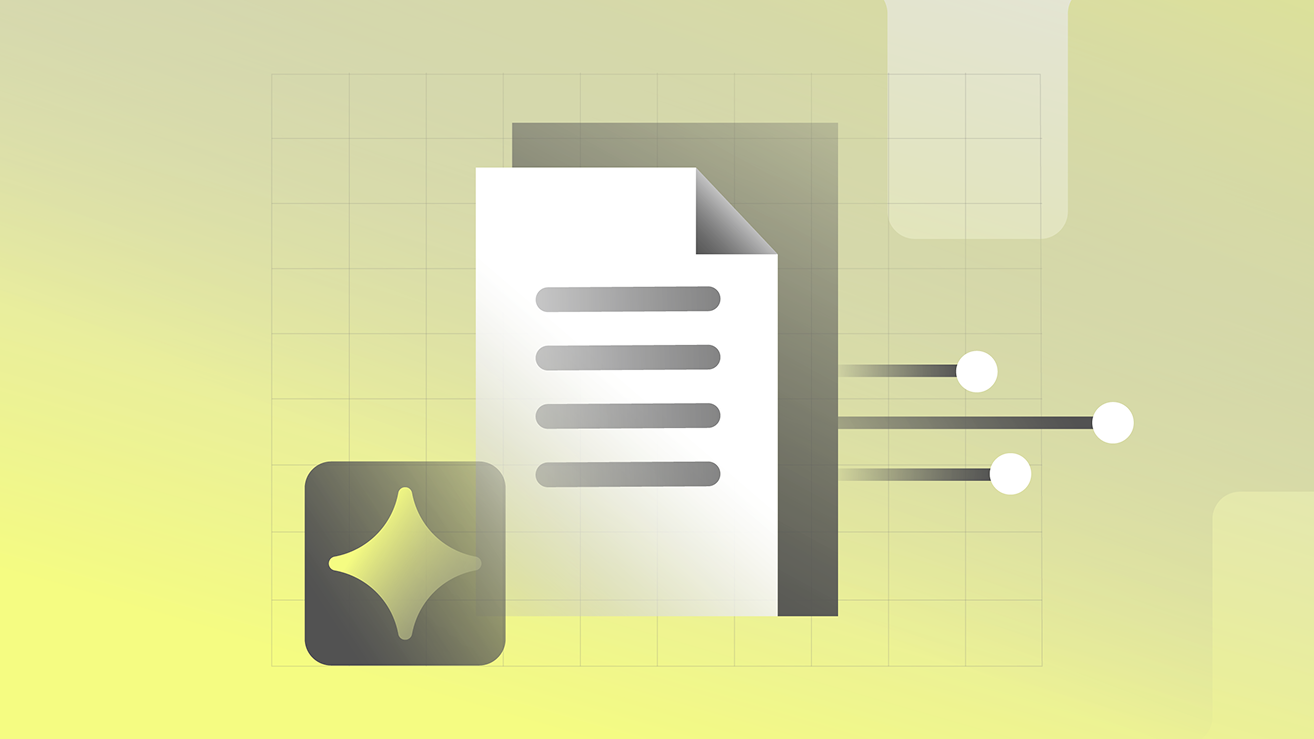
Key Takeaways
Back-office operations are the engine of a business, and they are often filled with repetitive, manual tasks that are perfect candidates for automation.
- What are the functions: Key areas ripe for transformation include Finance and Accounting (invoice processing), Human Resources (onboarding), IT Operations (incident response), Procurement (purchase-to-pay), and Data Entry across all departments.
- The business impact: Automating these functions reduces costs, minimizes errors, and allows teams to focus on value-added work.
- The key takeaway: Automation is a powerful tool for improving the efficiency of core business operations.
The Top 5 Back-Office Functions That Should Be Automated
For far too long, automation’s full promise has remained out of reach for many enterprises. Legacy tools often crumble under the weight of maintenance, complexity, and escalating costs. Meanwhile, emerging AI solutions can introduce new risks, operating as “black boxes” that compromise process integrity. The truth is, efficient back office automation should not be a complex endeavor, nor should it involve a constant battle against technical debt. It’s time for a shift in how we approach the back office process.
Kognitos is ushering in a new era of safe, simple, and scalable automation, operating entirely in transparent natural language. Our platform empowers business leaders to redefine their back office process, moving beyond the limitations of traditional approaches. We offer an enterprise-grade AI solution that handles both structured and unstructured data, eliminating the need for multiple specialized tools and consolidating your tech stack.
True transformation of back office systems comes from AI that understands processes in plain English, continuously learns, and provides full auditability. This ensures verifiable ROI and fosters a new era of trusted, autonomous operations. This article will outline the top five back office automation candidates, demonstrating how intelligent AI is reshaping operations.
Understanding Back-Office Functions
The back office encompasses all administrative and support functions essential for a business’s smooth operation. Unlike front-office activities that directly interact with customers, back-office tasks focus on internal processes. These include areas like finance, accounting, human resources, legal, procurement, and general operations. They are the backbone of any organization, ensuring compliance, managing finances, and supporting employees.
For instance, the back office process in finance might involve managing invoices and payments, while HR handles employee onboarding and payroll. These functions, while not client-facing, are critical for a company’s overall health and efficiency. Optimizing them through back office automation can lead to significant gains across the entire organization.
Why Automate Back-Office Functions?
The drive to automate back office functions isn’t just about cutting costs; it’s about building a more resilient, efficient, and intelligent enterprise. Organizations currently waste billions of Dollars annually on back-office processes that could be automated. This highlights a massive opportunity for improvement.
Traditional automation tools often fall short, becoming brittle and costly to maintain. They frequently require specialized developers and create new technical debt. Kognitos, with its unique approach to back office automation, addresses these challenges head-on. Our platform empowers businesses to turn existing process documentation into safe, scalable automations using natural language. This means no code, no brittle bots, and no black boxes.
Here are key benefits of robust back office automation:
- Cost Reduction: Automating repetitive tasks significantly lowers operational expenditures.
- Increased Efficiency: Processes are completed faster and with fewer errors, boosting overall productivity.
- Enhanced Compliance: Automated processes ensure adherence to regulatory requirements with full audit trails.
- Improved Accuracy: Eliminating manual intervention reduces human error and improves data quality.
- Employee Empowerment: Teams can shift their focus from mundane tasks to strategic, high-value initiatives.
Top 5 Back-Office Functions Ripe for Automation
| Function Category | Automation Opportunities | Automation Impact |
| Finance & Accounting | Invoice Processing, Payment Reconciliation, Journal Entries, Financial Reporting | Eliminates manual data entry, accelerates financial close, ensures accuracy |
| Procurement & Supply Chain | Purchase Order Management, Vendor Management, Contract Review, Inventory Tracking | Streamlines procurement, reduces lead times, enhances compliance in vendor interactions. |
| Human Resources | Employee Onboarding, Payroll Processing, Benefits Enrollment, Time & Attendance | Automates HR workflows, improves employee experience, ensures accurate payroll. |
| Legal & Compliance | Contract Management, Document Routing, Compliance Tracking, Audit Logging | Centralizes legal document management, automates routing, ensures regulatory adherence. |
| Operations | Order Processing, Fulfillment Coordination, Claims Processing, Customer Onboarding | Speeds up order-to-cash cycles, optimizes fulfillment, enhances customer satisfaction. |
1. Finance and Accounting: Beyond Basic Automation
Finance departments are often burdened by manual, repetitive tasks that consume valuable time and resources. Back office automation in this domain can drastically improve efficiency and accuracy. Consider invoice processing: from receipt to payment, the entire lifecycle involves data extraction, validation, approval workflows, and reconciliation. Traditionally, this is a labor-intensive back office process prone to errors and delays.
Kognitos transforms this. Our platform can process hundreds of enterprise applications and unstructured data in emails or documents, handling complex scenarios with ease. For example, our built-in document and Excel processing capabilities are designed for the most advanced financial tasks. Instead of rigid, rule-based systems, Kognitos learns from human guidance through its patented Process Refinement Engine. If an invoice requires an exception, the system converses with your team, learns the resolution, and applies it to future similar cases. This ensures that financial back office process flows are not only automated but also continuously optimized, maintaining full auditability and explainability.
2. Procurement and Supply Chain: Driving Efficiency and Compliance
Managing purchase orders, vendors, and contracts involves a vast amount of data and many intricate steps. From vendor onboarding and due diligence to purchase order generation, approval, and reconciliation, the back office process here is complex. Manual intervention can lead to significant delays, compliance risks, and increased costs.
Back office automation with Kognitos simplifies these workflows. The platform handles various data types, ensuring that information from diverse sources—like supplier emails, scanned contracts, or ERP systems—is seamlessly integrated. Our AI reasoning capabilities allow for intelligent exception handling, ensuring that even deviations from standard purchasing protocols are managed efficiently and documented. This proactive approach minimizes human error, speeds up procurement cycles, and strengthens compliance across the supply chain. It’s about empowering business users to manage their procurement workflows in natural language, reducing reliance on IT for every process change.
3. Human Resources: Streamlining Employee Lifecycle
HR departments manage a myriad of administrative tasks, from onboarding new employees to processing payroll and managing benefits enrollment. These are crucial back office functions that directly impact employee satisfaction and operational compliance. Manual HR processes are often slow, prone to errors, and can detract from more strategic HR initiatives.
Automating HR back office process workflows can lead to significant improvements in efficiency and the employee experience. Kognitos can automate employee onboarding, ensuring all necessary forms are completed, data is accurately entered into systems, and access is provisioned seamlessly. For payroll processing, our platform ensures timely and accurate calculations, integrating with existing HRIS and financial systems. The ability to define and refine these processes in English means HR teams can directly manage and evolve their automations, rather than waiting on IT. This makes the back office process not only more efficient but also more adaptable to changing business needs.
4. Legal and Compliance: Ensuring Accuracy and Auditability
Legal departments and compliance teams are tasked with managing vast amounts of documentation, ensuring adherence to regulations, and mitigating risk. Tasks like contract management, document routing for approvals, compliance tracking, and maintaining audit logs are highly critical and often time-consuming. Manual handling of these back office functions can lead to significant legal and financial exposure.
Kognitos provides a robust solution for legal and compliance back office automation. Our platform can process and understand unstructured legal documents, extract key clauses, and route contracts for review and approval based on their content. The neurosymbolic AI architecture ensures processes are followed precisely, eliminating AI hallucinations—a critical feature for sensitive legal and compliance workflows. Every action is recorded in natural language, creating a transparent, auditable log that supports regulatory requirements. This capability transforms tribal and system knowledge into documented, automated workflows, ensuring that critical legal and compliance processes are consistently executed and easily auditable.
5. Operations: Optimizing Core Business Workflows
Beyond the specialized functions, general operations involve a broad spectrum of back office process activities essential for day-to-day business. These include order processing, fulfillment coordination, claims processing, and customer onboarding. In many organizations, these processes are still heavily reliant on manual steps, leading to bottlenecks and inefficiencies.
Back office automation in operations can accelerate business cycles and improve service delivery. Kognitos enables businesses to automate complex operational workflows, integrating with legacy applications through browser use where APIs are absent. This ensures interoperability across diverse back office systems. For instance, automating order processing can involve extracting details from various channels, validating inventory, initiating fulfillment, and updating customers. Kognitos’ Process Refinement Engine constantly learns from human interactions, ensuring that operational automations adapt to changing business demands, such as new product lines or fulfillment partners. This adaptability, combined with the ability to define processes in English, empowers operations teams to drive continuous improvement and scalability.
Moving Beyond Legacy Automation
Many organizations have invested in Robotic Process Automation (RPA) or other automation tools, only to find them brittle, hard to scale, and costly to maintain. These solutions often address way less than the total automation demand.
Kognitos represents a fundamental shift in back office automation. Our platform leverages natural language process automation and AI reasoning to empower business users. It’s about turning your plain English process documentation into self-maintaining automations. This approach eliminates 70% of automation maintenance costs by allowing the system to learn and adapt autonomously.
Key Kognitos differentiators include:
- Unified Platform: Automate diverse back-office processes and expand use cases without tool sprawl.
- Comprehensive AI Governance: Neurosymbolic AI eliminates hallucinations by design, providing robust governance.
- English as Code: Business users define and evolve processes in plain English, aligning IT and business teams.
- Patented Process Refinement Engine: AI learns from human interactions to continually refine automated processes.
- Built-in Document and Excel Processing: Most advanced capabilities built directly into the AI platform.
- Automatic Agent Regression Testing: Speeds up process changes with confidence, keeping automations current.
Discover the Power of Kognitos
Our clients achieved:
- 97%reduction in manual labor cost
- 10xfaster speed to value
- 99%reduction in human error
The main functions of the back-office include critical administrative and support activities that ensure a business operates smoothly, such as finance and accounting (invoice processing, payment reconciliation), human resources (onboarding, payroll), legal (contract management, compliance), procurement (purchase order management, vendor management), and operations (order processing, fulfillment coordination). These functions are vital for internal business processes but typically do not involve direct customer interaction.
Front-office automation focuses on customer-facing processes, such as sales, customer service, and marketing, aiming to enhance customer experience and engagement. Back-office automation, in contrast, targets internal administrative and support processes that are not directly visible to the customer. While front-office automation improves external interactions, back-office automation drives internal efficiency, cost reduction, and compliance. Both are crucial for overall business optimization, but they address different operational domains.
Almost any repetitive, rule-based, or high-volume back-office work can be automated. This includes tasks like invoice processing, data entry, payment reconciliation, employee onboarding, contract review, compliance tracking, and report generation. Advanced AI platforms like Kognitos can even automate processes involving unstructured data and handle exceptions through natural language, making more complex back office functions eligible for automation.
Automating back-office functions involves identifying repetitive tasks, mapping out existing processes, and then deploying an intelligent automation solution. Modern platforms like Kognitos allow business users to automate by simply describing their processes in natural language (English as code), eliminating the need for complex programming. The system then learns from human interactions to refine and improve automations, ensuring continuous efficiency and compliance.
Back office functions are the internal operations and administrative tasks that support a business’s core activities without direct customer interaction. These include departments like finance, human resources, legal, and IT, which handle essential processes such as accounting, payroll, data management, and compliance. They are fundamental to an organization’s operational stability and efficiency.
The benefits of back-office automation are substantial, including significant cost reductions, increased operational efficiency, improved data accuracy, enhanced compliance, and faster processing times. By automating routine tasks, organizations can free up human employees to focus on strategic, high-value work, leading to greater innovation and employee satisfaction. It also helps in scaling operations without a proportional increase in headcount and reduces technical debt.








